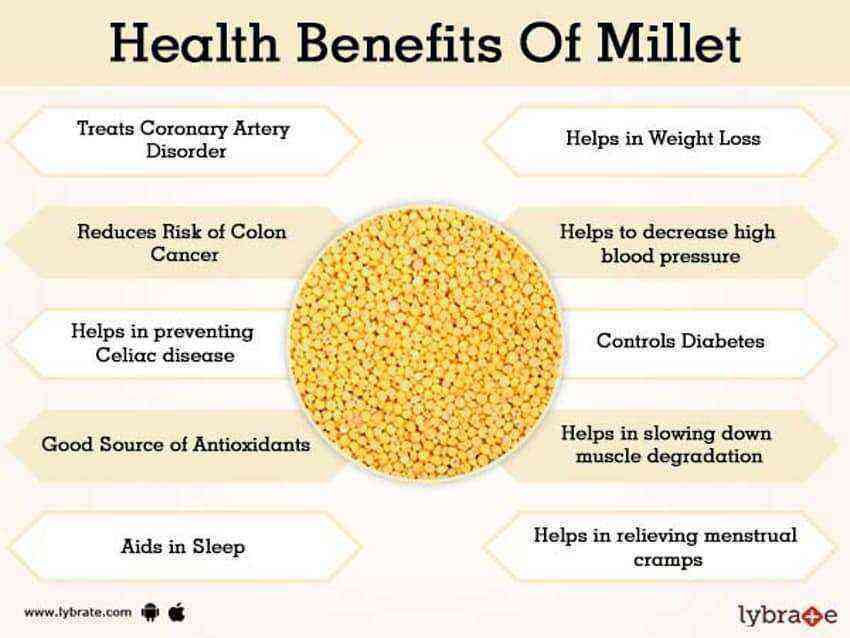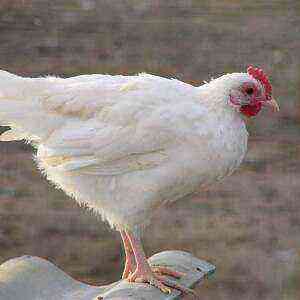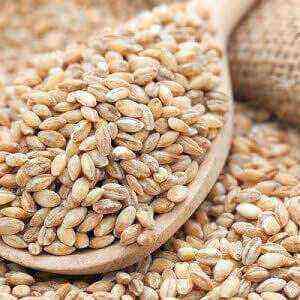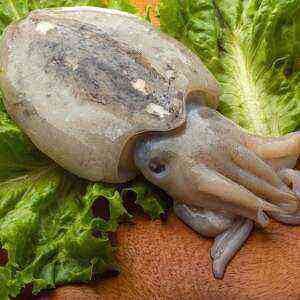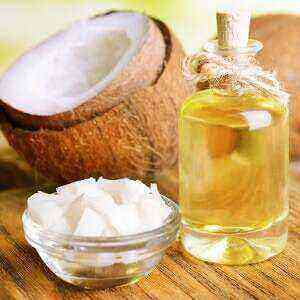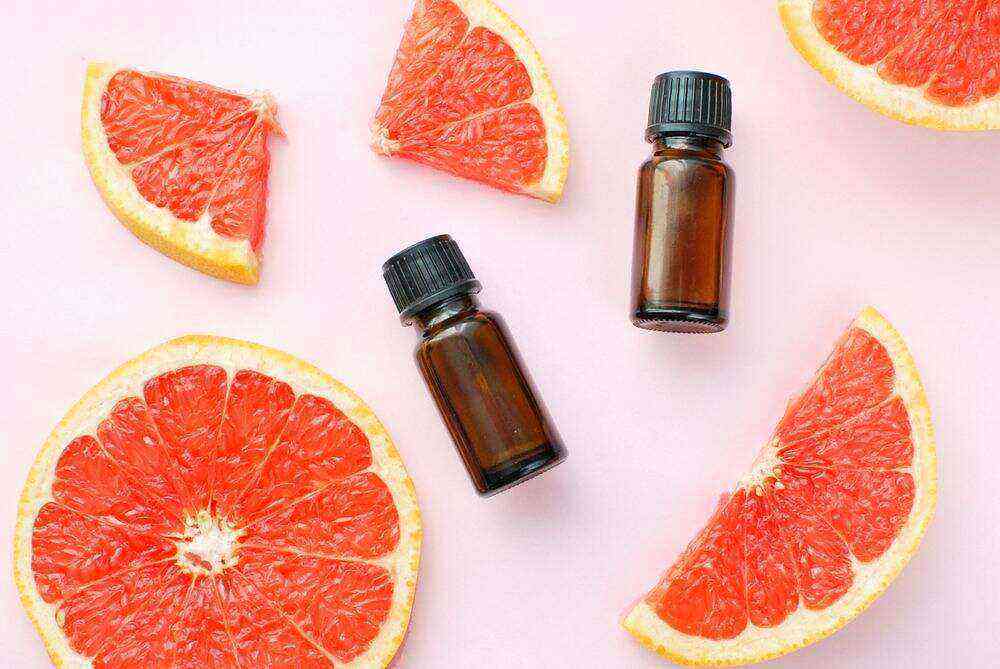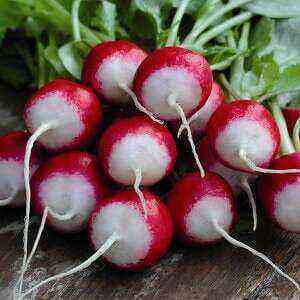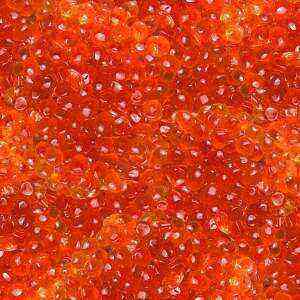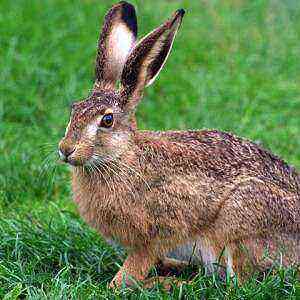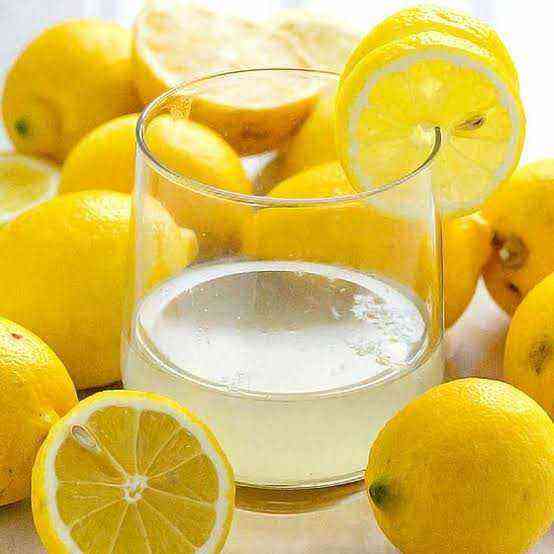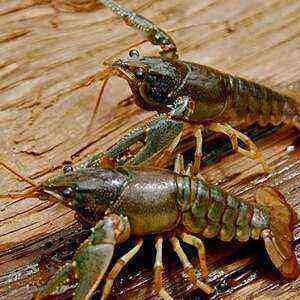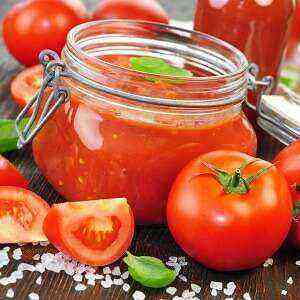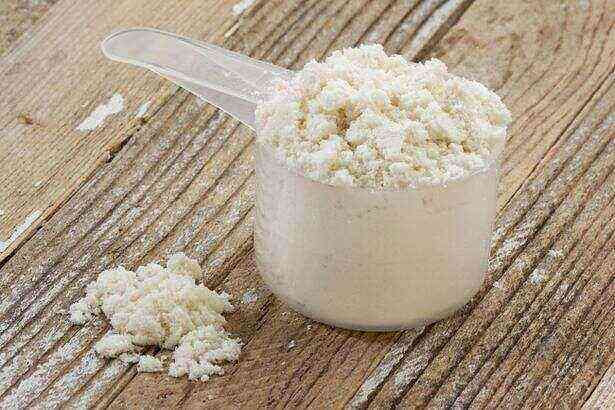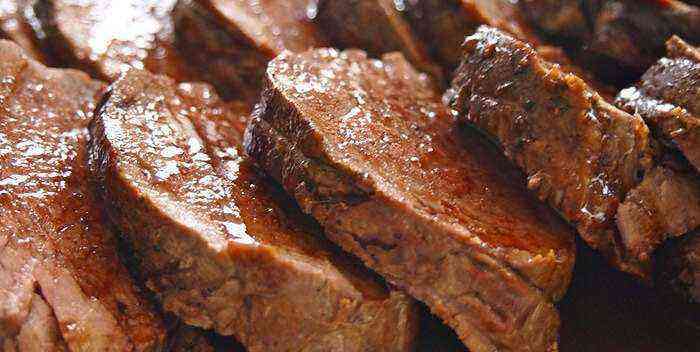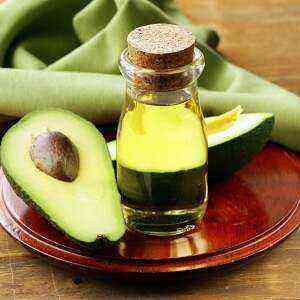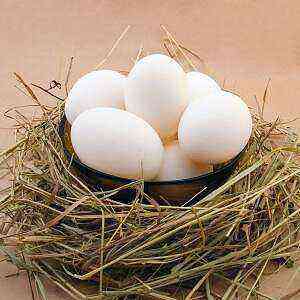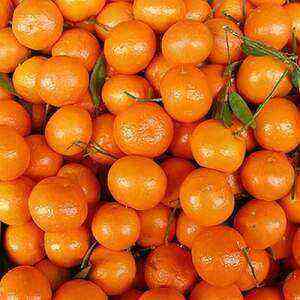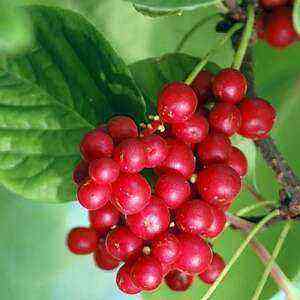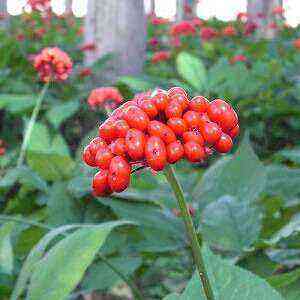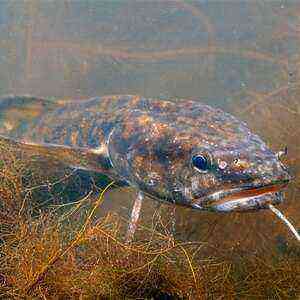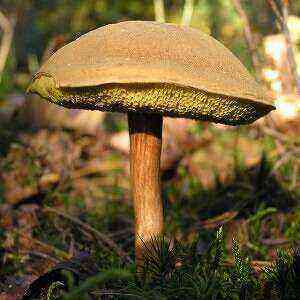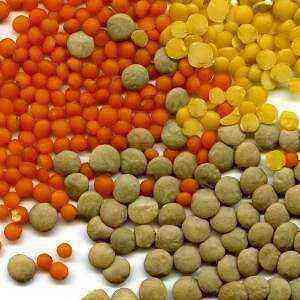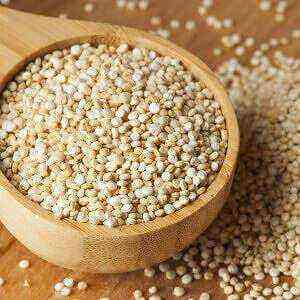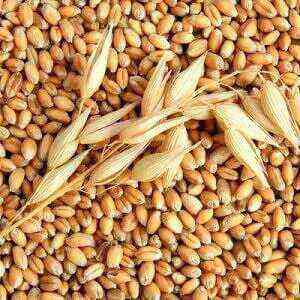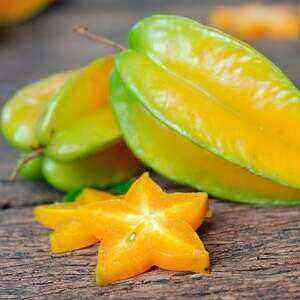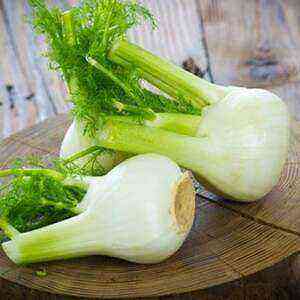
About the beneficial properties of fennel is known to this day. It has bactericidal, antiviral and expectorant properties, increases lactation in lactating women, calms the nervous system, dilates blood vessels, eliminates spastic colitis, stomatitis, pharyngitis.
Fennel uses: agriculture, veterinary medicine, perfumery, cooking, traditional medicine, soap, winemaking and baking.
Chemical composition
Fennel exhibits powerful antioxidant properties. It includes kempferol glycosides, quercetin, flavonoids, rutin, malic and succinic acids, sugars. Among phytonutrients, anethole is considered the most important. This substance reduces the inflammatory processes in the body, prevents the growth of cancer cells, protects the liver. The fruits contain fatty (up to 12%) and essential (up to 6%) oils, which give a sweet-spicy taste and aromatic smell to the plant. A distinctive feature of the herb is its high vitamin C content (up to 90%).
All parts of the plant are suitable for use, but its seeds are most appreciated (345 kcal per 100 g).
Herbal ingredients exhibit the following actions: diuretic, mild laxative, antiemetic, antispasmodic, choleretic, carminative, expectorant, lactogonic, blood purifying, sedative.
Contrary to popular belief, dill water is made only from a solution of fennel oil and has nothing to do with dill. It is used to combat bloating and colic in children.
Table No. 1 “Nutritional value of fennel seeds”
Components
Content in 100 grams of product, grams
Углеводы
52,3
Пищевые волокна
39,8
Белки
15,8
Жиры
14,9
Омега-9
9,91
Заменимые аминокислоты
9,117
Вода
8,81
Зола
8,22
Незаменимые аминокислоты
6,178
Омега-6
1,69
Насыщенные жирные кислоты
0,48
Стеролы
0,066
Table № 2 “The chemical composition of fennel seeds”
Name
Nutrient content in 100 grams of product, milligrams
Vitamins
Ascorbic acid (C) 21,0 Niacin (B3) 6,05 Pyridoxine (B6) 0,47 Thiamine (B1) 0,408 Riboflavin (B2) 0,353 Beta-carotene (A) 0,007
Macronutrients
Калий
1694
Кальций
1196
Фосфор
487
Магний
385
Натрий
88
Trace Elements
Iron 18,54 Manganese 6,533 Zinc 3,7 Copper 1,067
Fennel is used to make soups, drinks, sauces and salads. This is a natural flavor that improves the smell of marinades, pickles. Fennel is prepared for use: the roots are dug, frozen or sprinkled with earth and stored as root vegetables. The leaves are dried and salted.
Useful Properties
Fennel relieves indigestion, fights against diseases of the respiratory tract, disorders of the monthly cycle, anemia, constipation, gas, diarrhea, colic, eye diseases. The plant contains antacids that neutralize the action of the acid, so it is introduced into the composition of mouth fresheners and toothpastes. In addition, the fruits of fennel are used in cooking for the manufacture of pies, puddings, liqueurs.

- Eliminates bloating, increased gas formation, has a carminative effect (aspartic acid).
- Protects eyes from inflammatory processes, age-related diseases and macular degeneration (vitamin C, arginine, magnesium, cobalt, essential oils). From fennel leaves squeeze the juice, which is instilled. It is used to relieve irritation and eye fatigue.
- It has an expectorant effect (anethol and cineole). Used to treat diseases of the respiratory system, accompanied by attacks of cough.
- It has a diuretic effect. Thus, fennel helps to eliminate toxic substances from the body, eliminates abdominal distension and rheumatism.
- Increases the production of breast milk in women during lactation.
- Strengthens hair, gives them a natural shine.
- Calms the nervous system, improves memory.
- Removes attacks of renal colic (polymers).
- Prevents the formation of anemia (histidine and iron). These compounds are part of enzymes, blood, participate in redox reactions, blood formation, respiration, immunobiological processes, create an oxygen supply in the body.
Iron deficiency anemia leads to the development of psychological and neurological disorders, which are manifested in the change of taste desires, the syndrome of “restless legs”, headaches, irritability. With the wrong treatment, the disease causes the following effects: deformation of the nervous system, reduced immunity, abnormal epithelial tissue, deterioration of performance, enlarged liver, lower extremity edema. The decrease in the content of red blood cells increases the load on the heart, which begins in an intensive way to supply organs and tissues with the lack of oxygen. As a result, there is a risk of death.
- It facilitates the digestion of food by stimulating the secretion of gastric, digestive juices, eliminates bad breath.
Fennel relieves gastrointestinal disorders.
- It quenches pain during menstruation in women, normalizes hormonal levels.
- It treats diarrhea caused by the activity of microbes. The composition of fennel essential oil includes cineole and anethole. These components have a disinfecting effect on the human body. In addition, the amino acid histidine improves the breakdown of food, facilitating the course of diarrhea.
- Supports peristaltic movements in the intestines. Due to this, plant seeds have a laxative effect on the human body, and the herb is used to combat constipation.
It is believed that fennel charges a person with energy, gives strength. Currently, the product is served in restaurants in India after dinner, as a dessert, to freshen breath.
Harm to the body
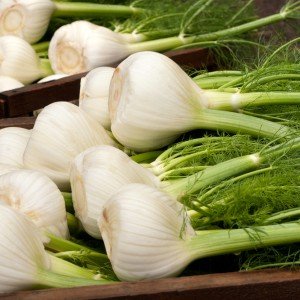
Traditional recipes
Expectorant
Preparation: 30 g of fennel seeds pour 200 ml of boiling water, infuse 20 minutes, drain. Use 100 ml four times a day before meals.
Diuretic
Used to relieve edema. Principle of preparation: 5 g of the fruits of fennel is brewed in 200 ml of water, left in a warm room for 10 minutes, filtered. Drink 150 ml of 3 times per day.
Carminative, expectorant
The principle of creation: brew 30 g of fennel in 200 ml of boiling water, place in a water bath for a quarter of an hour. Cool, strain, bring to the original volume (add water). Before use, the infusion is heated. Take 4 times per day for 100 ml (for adults) and 15 ml (for children).
To eliminate excess gas formation and treat dry cough, fennel oil is used. The product is a colorless liquid with a strong odor (like anise). It is obtained by treating the fruit with water vapor. Fennel oil has a bitter camphor taste with sweet notes. 60% fluid consists of anethole.
Sedative
Medicinal decoction is prepared as follows: Pour 5 ml of water with 250 g of fruit, boil 30 minutes on low heat, filter. Take 50 ml (adults) and 10 ml (infants) before eating 4 times a day.
Lactogenic

Fennel oil
Effect on the body:
- removes slags, toxins;
- eliminates constipation and diarrhea;
- normalizes the digestive tract;
- removes bloating;
- restores the work of the liver, kidneys, spleen after alcohol overdose;
- activates the production of its own estrogen by the body and the activity of the endocrine glands;
- relieves premenstrual conditions and menopause symptoms;
- calms the nervous system.
Fennel oil exhibits aphrodisiac properties and has antifungal action. Interestingly, after the air in the room is reorganized (2 drops of money per 5 sq. M.), The number of microbes decreases 5 times.
The aroma of oil has a sedative effect on the central nervous system: eliminates complexes, fears, obsessive thoughts, gives a feeling of harmony, independence, freedom. Used in folk and traditional medicine, cosmetology inside and outwardly in the form of compresses, applications, rubbing, massage mixtures.
Fennel oil is used for:
- air flavoring;
- enrichment of cosmetics (tonics, creams, masks, shower gels, scrubs, lotions, shampoos) with useful biologically active substances;
- treatment of influenza, pneumonia, pharyngitis, bronchitis, acute respiratory viral infections, acute respiratory infections (inhalation);
- improve cardiac conduction, lower blood pressure, relieve arrhythmias;
- stimulation of the digestive tract;
- dissolving kidney stones;
- relieving nausea, colic, hiccups, gag reflexes.
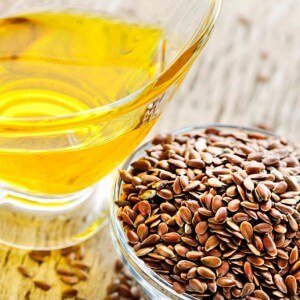
Lifting mask for face and décolleté
Its purpose is skin tightening. With regular use, fine wrinkles are smoothed out, the contour of the face becomes clearer, the dermis acquires elasticity and firmness, and the double chin “disappears”. The processes of active production of collagen and elastin are triggered in the skin cells, which maintain its youth and beauty.
Indications for use: age pigment spots, dry skin, mimic wrinkles, double chin, yellowness and grayness of the dermis, blurred facial contour.
Homemade fennel lifting masks have a smoothing, tightening and rejuvenating effect, therefore they are suitable for the care of a mature, fading derma.
Contraindications: obesity, open wounds on the surface, age up to 30 years, vascular, skin diseases, plastic surgery performed up to six months, intolerance to the components of the mask.
Ingredients: white clay (15 g), egg yolk (1 pcs.), Jojoba oil (15 ml), fennel, pink and non-nerve (in a drop of 1). All components mix, apply on cleansed skin, take a horizontal position (to avoid sagging of the dermis), lie down for 30 minutes. Wash off the mask with contrasting water. The procedure is to perform 2-3 times in 7 days during the 1 month.
Anti-cellulite massage oil
It relieves fatty tubercles and orange peel by accelerating the metabolism, increasing blood flow, and normalizing the water-salt balance.
Components of anti-cellulite products: olive oil (50 ml), grapefruit, patchouli, lime, fennel (5 drops each). Mix the resulting composition thoroughly, rub into problem areas 2 times a day for the first week and 1 time for the second. When cellulite resolves to apply oil at least 3 times in 10 days as a prophylaxis. If an additional ingredient, clay, is introduced into this formulation, the product can be used for cosmetic wraps.
Eye cream

Nourishing face mask and hands
It activates metabolic processes, relieves irritation, improves its blood circulation, slows down age-related changes, relieves fatigue, softens, and rejuvenates the dermis. To prepare, mix cottage cheese (5 g), quince pulp (1 pc), fennel oil (3 drops), egg yolk (1 pc). The fruit is mashed in a blender, the remaining ingredients are introduced into the obtained slurry, mixed, applied to the hands and face for 15 minutes. After a quarter of an hour, wash off with water, moisturize.
Dill water
After the birth of the child in the digestive tract, the process of adaptation of the digestive system to the consumption of breast milk or formula begins. Because of this, almost all children after a month have intestinal colic, caused by abdominal distension and excessive gas formation. Dill water comes to the rescue to alleviate the condition of the baby. It is a solution of fennel oil (0,1%). Absolutely safe for children from birth. Interestingly, the name of the tincture of the fruits of fennel was due to the fact that the grass is called “pharmacy dill” by the people.
Beneficial features:
- relaxes smooth muscle spasms;
- is a diuretic;
- stimulates the production of beneficial microscopic flora;
- removes putrid formations;
- reduces pressure on the intestinal wall;
- dilates blood vessels;
- removes inflammatory processes;
- improves bile flow, kidney function, digestion;
- has antibacterial properties;
- cough sputum;
- increases the passage in the bronchi;
- relieves constipation;
- normalizes sleep, calms the nervous system;
- promotes healing of wounds, ulcers;
- relieves pain.
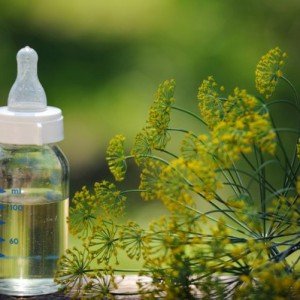
Principle of preparation:
- Dry fennel seeds (5 g) chop in a blender or coffee grinder, pour into a glass.
- Fill with hot water (250 ml).
- Leave infused for 45 minutes, filter. Store no more than a day.
The finished dill water is added to the infant formula or expressed milk no more than 5 ml (1 teaspoon) and give the baby 3 once a day, observing its reaction. If necessary, the dosage is increased to 6 once a day.
Newborn babies from two weeks to a month are advised to drip onto the tongue with an 15 droplet of fennel solution. After the digestion process has been normalized, dill water treatment is canceled. As a rule, by the 6 months, intestinal colic ceases to disturb the baby, because his body has already adapted to the new life and he copes well with the “processing” of milk.
With bloating, upset stools and loss of appetite, dill water does not always help. In this case, you should consult a doctor.
The analogue of dill water is the drug “Plantex”, made from the extract of fennel seeds. This is a granulated herbal remedy with carminative properties. It enhances intestinal motility, increases the secretion of gastric juice, improves the discharge of gases, normalizes digestion. The granules from the sachet of Plantex are dissolved in warm boiled water (100 ml). The entire volume is divided into 3 equal portions, give children up to a year.
Outdoor cultivation
Fennel has a thick, spindly, taproot. Stem erect, branched. Leaves pinnately dissected. The plant reaches up to 2 m tall. The fruit is ovate-oblong with pronounced blunt ribs, elongated at the edges. Petals broadly ovate, yellow, notched on apex. Grass multiplied by sowing seeds or dividing the bush.
Landing requirements
Deadlines
Fennel ripens quickly, thanks to which it can be rooted throughout the warm period of the year. He does not tolerate a long light day. To get a harvest, the plant is planted in the ground from April to the end of May 15 and from August 15 to September 15. To receive planting material for the next year, wait until the seeds are fully ripe. You can get them only from early spring sowing (late April). Otherwise, fennel grown seedlings in pots at home. Among the sprouted shoots choose the strongest, which is rooted in open ground. That the plant got accustomed, beds cover with a film.
soil
Fennel grows well on loamy, sandy sand and black soil. In the wild, it is found on weedy places, rocks, in the foothills and steppes. However, to obtain a high yield, the soil for sowing must be moist, loose and fertile. For this, humus, sand, sawdust, compost, dolomite flour and ash are introduced into the soil.
Place
Under the landing choose a sunny or slightly shaded place. The optimal temperature for growing fennel is 16-20 degrees above zero. When the indicator drops to 7 degrees or rises to 24 degrees, growth slows down.
The plant is recommended to be planted near cabbage or cucumbers, since they are also hygrophilous. In addition, fennel essential oils repel aphids, thereby protecting vegetables. The plant should not be planted in the immediate vicinity with beans, beans, tomato, spinach and pepper.
Planting Seeds
Fennel fruits are oblong seeds of greenish-brown color, 3 mm x 10 mm in size. With early spring planting blooms in July. Seeds ripen in September. Their collection comes from umbrellas.
First of all it is necessary to moisten and feed the soil. On 1 sq.m. future beds make 0,5 kg of ash and a bucket of humus, compost. If the soil is too depleted, add ready liquid fertilizer. Seeds are buried 2 cm into the ground, keeping the distance between the rows of 40 cm. The first shoots appear after 3 weeks, because essential oils slow down the penetration of moisture into the kernels, and as a result their growth is slowed down. Shoots thinned. The distance between plants should not be less than 15 cm.
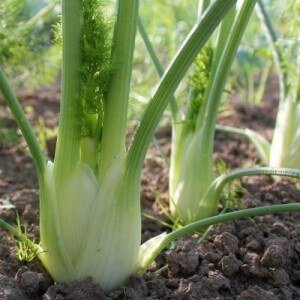
- Adequate hydration. Remember, fennel loves moisture. Without regular watering, vegetable varieties will not give fleshy heads, and the plant will stop its growth, will begin to die. The soil should always be hydrated. In dry weather, watering fennel is produced every other day, and in the fall, during the rainy season, according to needs.
- Removal of peduncles in the absence of the purpose of collecting seeds.
- Loosening the land, weeding, mulching. These operations will help to preserve moisture in the soil and relative purity in the garden beds.
- Spinning vegetable varieties. The procedure improves the establishment of coaches.
- Fodder chicken manure, organic, ash during the season.
For greens, medicinal grade of fennel is harvested when the base of the root is no more than 1 cm in diameter, without waiting for the culture to bloom. The top is cut off, used fresh or dried, frozen, added to preservation. Harvesting a vegetable variety falls on a period when the cob reaches the size of 10, see. After that, it is consumed immediately or placed in a safe, dark, cool and damp room. In the second case, heading clear of the leaves, cut the stems, leave 10 cm of stalks, without touching the roots.
Conclusion
Fennel is a perennial spindle-shaped grass with an erect, round stem, narrow leaves and a groove-like petiole. Cultivated in America, China, Moldova, Ukraine, France, Poland, the Mediterranean, Transcaucasia, Central Asia, Argentina, Italy. There are 2 plant species: Italian (vegetable) and ordinary (pharmacy dill). All parts of the culture are suitable for food, but the seeds are the most valuable.
Fennel is known for its carminative, antifungal, lactogonic, expectorant, disinfectant properties. Drugs based on it are used to treat insomnia, cough, flatulence, abdominal pain, bronchitis, pneumonia, irritable bowel syndrome, colds, helminthic, viral, eye, kidney diseases. Fennel essential oil is used in cosmetology to care for fading derma. This is a strong sedative that has a sedative effect on the central nervous system. Dill water and medications (Plantex) are prepared from the fruits of fennel to eliminate intestinal colic and increased gas formation in children.
In addition to useful properties, the culture has a characteristic aroma like anise and a sweet-spicy taste. Because of this, it is widely used in cooking for the preparation of first, second courses, drinks, pickles, marinades, sauces and salads. Contraindicated during pregnancy, epilepsy, heart disease, allergies.
